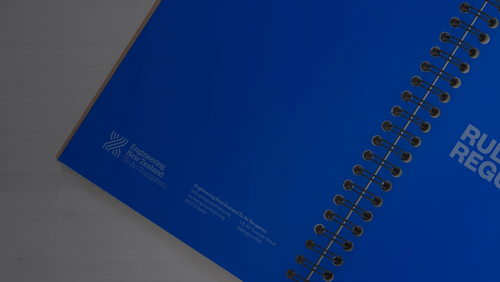17 Oct 2019
This week there's been coverage of two issues concerning engineers and engineering.
Defects uncovered in concrete?
There has been some media coverage relating to claims by Concrete Structure Investigations that its technology reveals many buildings to have defects.
SESOC President Hamish McKenzie has said to the media:
“In general, New Zealand buildings have a robust track record. Over time, and due to earthquakes, engineers’ knowledge about how buildings perform grows – and this means standards and practices change, in the same way that medical knowledge grows and changes.
“There’s a lot of hearsay about quality issues but a lack of hard data that captures holistic quality insights across the construction sector and uses this information to inform focus areas for improvement.
“Engineering New Zealand and SESOC are working together to see how we can better utilise information and will continue to seek input from the wider sector in order understand how we can best do this. This will require engagement from across the wider sector.
“It’s really important that poor quality construction work is uncovered and it’s great to see new technology being used to help with this.
“These kinds of investigations are often carried out when there’s uncertainty about what a drawing shows or whether the drawing matches what’s been constructed. They’re typically carried out where doubt already exists.
“There are construction quality issues that engineers are alert to when they carry out earthquake assessments on buildings. For example:
“In the revised (yellow) version of the C5 chapter of the Seismic Assessment Guidelines, released in late 2018, we advised engineers that if they were assessing a building with certain features (like drossbaches, for example) then they should consider whether those features were constructed as designed.
“If an engineer wasn’t sure, then they should do some investigation to confirm this, as part of their assessment.
“But this is just one aspect of a building that should be considered in the context of a whole assessment.
“Sometimes it’s a problem if what’s constructed doesn’t match the drawings. But sometimes it’s not a problem or there was a good reason why what was constructed is different.
“An anomaly is only a defect if it has a material impact on how the building is intended to perform.
“A building owner needs advice from a structural engineer about whether the anomaly makes any difference to the building’s overall structure.
“It’s really important that the industry takes a collaborative and more holistic approach to construction quality issues. This is something that SESOC and Engineering New Zealand have been discussing with MBIE.”
Read the NZ Herald’s coverage of this issue
Reports on some buildings in Palmerston North
Radio New Zealand has run a story on engineering reports on a number of buildings in Palmerston North designed by the same firm.
We were asked about the connection between these reports and similar reports on buildings in Masterton.
This is what our Chief Executive Susan Freeman-Greene said:
”The issues with these buildings concern us.
“Similar issues were raised with us about buildings in Masterton in 2016.
“We then launched multiple disciplinary processes and a wider systems inquiry. These were based on engineering assessments of six buildings.
“At the moment, we are at the very end of these disciplinary processes.
“We are also in the final stages of the systems report, which has been extended beyond the buildings to shine a light on where we see failure in the system from design to delivery.
“This will provide a lot of lessons for everyone, including us, about action that needs to be taken to better protect the public.
“All of this adds impetus to the need to change the way that engineers are regulated.
“We support the introduction of a new licensing regime for safety-critical engineering work, underpinned by strong self-regulation of general competence. This means engineers would need a government-regulated licence to do specific safety-critical work.”







